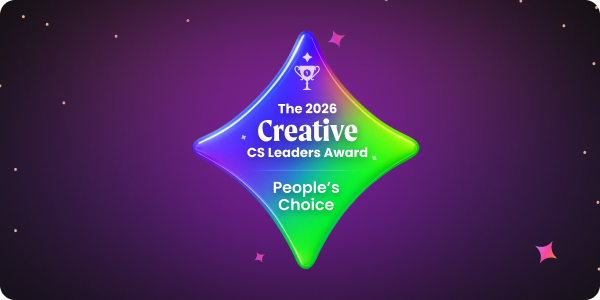Master partner-led onboarding strategies that accelerate time-to-value by 60% and strengthen partner relationships across global markets. Learn automation frameworks, content curation techniques, and B2B interface implementation. Essential guide for partnership teams worldwide building scalable onboarding programs that drive partner success within 30 days.
Introduction: Understanding the Importance of Partner-led Onboarding
The strength and efficiency of your partnerships can significantly impact your market presence. A crucial component in nurturing these relationships is the onboarding process. Traditionally, companies have guided partners through a structured onboarding process, often leading the way. However, this method can sometimes be rigid and slow, limiting partners' ability to adapt quickly and capture value.
Partner-led Onboarding shifts this dynamic by giving partners the autonomy to steer their own onboarding journey. This approach not only empowers partners to align the process with their specific needs but also enables faster, more efficient integration, ultimately leading to better business outcomes.
Defining Partner-led Onboarding
Partner-led onboarding is an approach where partners take the lead in their onboarding process. This means providing them with the right tools and resources at the right time, allowing them to navigate and control their onboarding experience based on their individual requirements and timelines. The goal is to make the onboarding process as responsive and adaptable as possible to each partner’s unique context.
Key Differences from Traditional Partner Onboarding
In traditional partner onboarding, the company’s Customer Success team typically directs the process. This involves a predefined path with the company controlling the pace and content delivery. While this can ensure a consistent experience, it often lacks flexibility and can be slower.
In contrast, partner-led onboarding puts the control into the partners' hands. It focuses on:
- Autonomy: Partners choose their pace and focus areas.
- Personalization: Resources and tasks are tailored to the partner’s specific needs.
- Responsiveness: The process adapts to the partner’s progress and feedback, enhancing engagement and efficiency.

How to Create a Great Partner-led Onboarding Process
Creating an effective partner-led onboarding process involves several key steps:
- Establishing Goals for Partner-led Onboarding: Begin by setting clear, measurable goals that align with both your business objectives and those of your partners. This might include targets for integration speed, product competency, and initial revenue generation. Clear goals provide a roadmap that partners can follow, ensuring that they understand the milestones they need to achieve.
- Automate and Personalize the Process: Automation is crucial in a partner-led onboarding model. Use automated systems to deliver personalized resources and guidance to partners based on their progress and specific needs. This approach ensures that partners receive the right information at the right time without overwhelming them with unnecessary details.
- Curate Content Thoughtfully: It's not enough to have a wealth of resources; they must be curated effectively. Each partner should have access to a central repository where all necessary materials are organized according to their role and stage in the onboarding process. This "single source of truth" should be intuitive and easy to navigate, ensuring partners always know what their next step is.
The Secret to the Best Process: Curating the Content
You might have excellent content for your partners, but are they aware of it? Can they easily access and consume it? The key to a successful partner-led onboarding is curating content in a way that simplifies the decision-making process for partners.
Effective Content Curation Involves:
- Relevance: Providing materials tailored to each partner’s persona and stage in the onboarding process.
- Accessibility: Ensuring that all resources are easy to find and use.
- Timing: Delivering the right resource at the exact moment it’s needed, which helps partners stay focused and engaged.
By curating content effectively, you prevent partners from feeling overwhelmed and lost in a sea of information, which can extend the onboarding time and create a poor experience.
{{cta-demo2}}
Leveraging Technology in Partner-led Onboarding: Why the B2B Partner Interface is Great
The Role of B2B Partner Interfaces
B2B Partner Interfaces, like EverAfter, play a crucial role in effective partner-led onboarding. These interfaces provide a centralized platform where partners can access all the resources, training, and support they need to succeed. They are designed to streamline communication, training, and management, making the onboarding process more intuitive and efficient.
Why B2B Partner Interfaces Are Crucial for Effective Partner-led Onboarding
B2B Partner Interfaces enhance the onboarding experience by:
- Streamlining Communication: Ensuring that partners can easily communicate with your team and receive timely responses.
- Organizing Training: Providing structured, accessible training materials that partners can use at their own pace.
- Simplifying Management: Offering tools to track progress and manage tasks, helping partners stay on top of their onboarding process.
.jpeg)
How B2B Partner Interfaces Streamline Communication, Training, and Management
These interfaces integrate various aspects of the onboarding process into a cohesive system. They facilitate:
- Real-time Communication: Tools for instant messaging, video calls, and feedback.
- Training Modules: Access to comprehensive training courses and materials.
- Progress Tracking: Dashboards that allow partners and your team to monitor onboarding progress and identify areas that need attention.
Addressing Common Challenges
Identifying and Overcoming Obstacles in Partner-led Onboarding
Despite its advantages, partner-led onboarding can present challenges, such as:
- Content Overload: Partners may feel overwhelmed by the volume of available resources. Mitigate this by curating and prioritizing content based on their immediate needs.
- Lack of Clarity: Without clear guidance, partners might struggle to know their next steps. Provide structured pathways and regular check-ins to keep them on track.
- Technological Barriers: Not all partners may be comfortable using new technologies. Offer training and support to help them adapt.
Case Studies and Real-World Solutions
Share examples of businesses that have successfully implemented partner-led onboarding. Discuss the strategies they used to overcome common challenges and how these approaches led to improved outcomes.
Best Practices for Long-Term Partner Engagement
Strategies to Keep Partners Motivated and Engaged Post-Onboarding
Post-onboarding, it’s essential to maintain partner engagement and motivation. Strategies include:
- Regular Updates: Keep partners informed about new developments and opportunities.
- Continuous Training: Provide ongoing learning opportunities to help partners grow their skills.
- Recognition and Rewards: Acknowledge partners' achievements and contributions.
Building a Sustainable and Productive Partnership
Sustaining a productive partnership involves:
- Ongoing Support: Continue to offer support and resources beyond the initial onboarding phase.
- Clear Communication: Maintain open and transparent communication channels.
- Alignment of Goals: Regularly revisit and realign mutual goals to ensure long-term success.
{{cta-demo2}}
The Role of EverAfter B2B Partner Interface
Strengthen Your Partners, Strengthen Your Business
EverAfter’s B2B Partner Interface revolutionizes how you engage with your partners. It’s designed to streamline and personalize the entire partner lifecycle, from qualification to revenue, ensuring that your partners have everything they need to succeed.
Key Features of EverAfter B2B Partner Interface:
- Centralized Hub: A single platform where partners can access all the resources, tools, and support they need.
- Automated Workflows: Simplify the onboarding process with automated tasks and resource delivery.
- Personalized Dashboards: Customized views that provide partners with relevant information and actionable insights.
- Real-time Communication: Integrated communication tools that facilitate seamless interactions between you and your partners.
- Performance Tracking: Comprehensive analytics that help you monitor partner progress and identify areas for improvement.
By integrating EverAfter’s B2B Partner Interface into your onboarding process, you can ensure that your partners are empowered, engaged, and set up for long-term success.
Conclusion
Transitioning to a partner-led onboarding model is a strategic move that can significantly enhance the efficiency and effectiveness of your partnerships. Whether you aim to be partner-led, customer-led, or prospect-led, the focus should always be on empowering your user. By streamlining their experience and providing clear, accessible resources, you not only improve their satisfaction but also drive better business outcomes.
It’s time to rethink your processes and leverage the right tools, like EverAfter’s B2B Partner Interface, to create a seamless and productive onboarding experience. By doing so, you position your business for growth and establish strong, lasting partnerships that contribute to mutual success.



.png)

.png)




%20(1).png)
















.png)
.png)
.png)



.avif)





.png)
.png)







